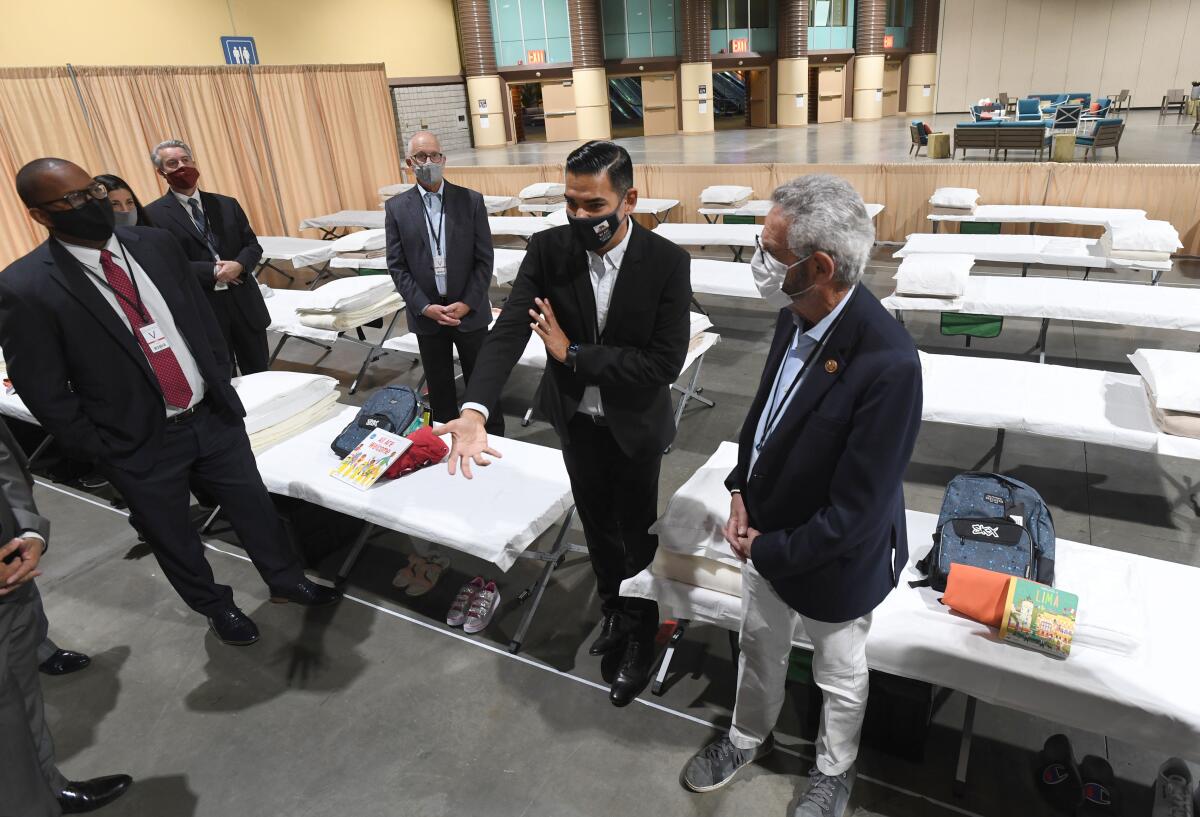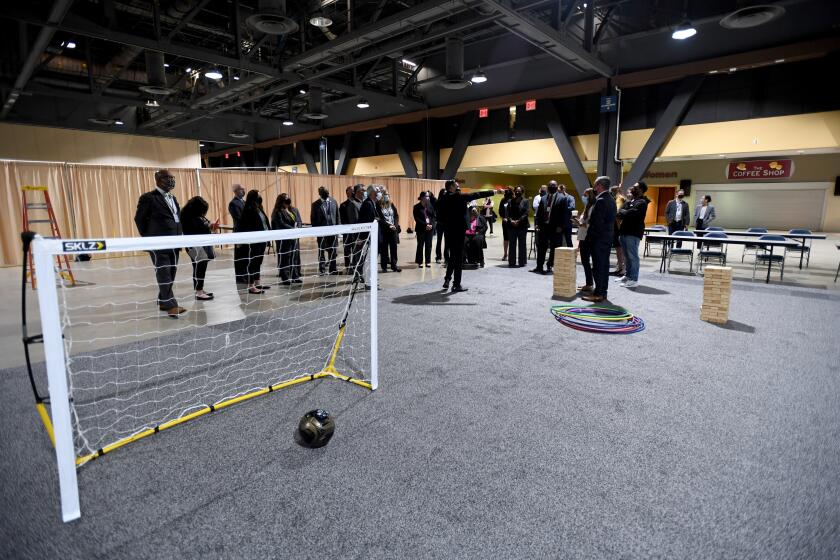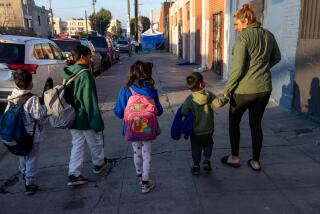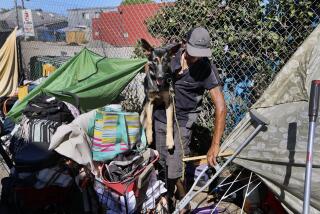Long Beach Convention Center opens as temporary facility for unaccompanied migrant children

- Share via
Federal officials on Thursday prepared to receive 150 migrant children at the Long Beach Convention Center, one of several structures in California and other states being repurposed as temporary intake facilities to cope with an overflow of unaccompanied minors at the southern border.
Sleeping areas were set up inside the Convention Center’s exhibit halls, with rows of cots draped with white sheets and stacked with folded blankets and pillows, photos shot by a media pool photographer showed.
In a news release, the U.S. Department of Health and Human Services said children would receive a medical checkup, clothing, toiletries and food upon arrival. The 1,000-bed facility will house girls under 17 and boys under 12.
Bonnie Preston, acting regional director for HHS in San Francisco, said young boys and girls, including toddlers, would arrive Thursday. The facility is expected to house mostly girls over 5.
The Long Beach Convention Center is preparing to open as a temporary facility for unaccompanied migrant children.
Preston said the site is being operated by DRC, a disaster management company.
Long Beach Mayor Robert Garcia said children will have three meals plus snacks. Classrooms were set up in breakout rooms of the Convention Center’s main hall, and children will get three to four hours of daily instruction. In addition to outdoor recreation space, children will have access to books, television and board games including Jenga. They’ll also have access to a “store” where they can pick out clothes and toys.
The UCLA Health is staffing a full-size medical clinic inside the facility, Garcia said.
Fourteen other temporary facilities have opened since February, according to HHS, the vast majority of them in Texas. The Pomona Fairplex and Camp Roberts, a California Army National Guard base inland from the Central Coast, are among other facilities being tapped.
“Providing unaccompanied children a safe, healthy place is both our legal and moral obligation,” HHS Secretary Xavier Becerra said in a statement. “While the work has only begun, we’re on the right path with reliable partners to get this done right.”
Last month, Border Patrol agents took custody of 18,890 unaccompanied children at the southern border — significantly more than the previous one-month high of nearly 11,900 in May 2019, according to federal data.
Customs and Border Protection, which oversees the Border Patrol, is required to transfer unaccompanied children in its custody to HHS within 72 hours. But the process has been stymied as more children have been arriving daily than are able to be transferred out.
As of Thursday, 21,116 children were in HHS custody after being transferred from Customs and Border Protection.
Preston, of HHS, said she expects the trend to begin to slow in August.
“Once the hot weather starts, there’s fewer making that terrible journey,” she said.
Preston could not immediately say how much it will cost to operate the site. But the Washington Post reported this month that emergency sites are 2.5 times more expensive than permanent shelters, with the average daily cost per child at $775.
Critics say Long Beach city leaders haven’t been transparent enough and that many questions remain about cost, oversight and services. Gaby Hernandez, executive director for the Long Beach Immigrant Rights Coalition, said turning the Convention Center into a facility for migrant children is not an appropriate solution to the country’s larger immigration issues.
Hernandez said she and other advocates are pushing for the formation of a community oversight committee that could visit the facility and report conditions to the public.
“Taking this position is not easy when the majority of people are buying into the idea that this is the best alternative,” she said. “I just want them to ask themselves whether they would want their child to spend a night there.”
Reunification has been a challenge. Unaccompanied children are staying an average of 37 days at government facilities, according to the latest data.
Garcia said reunification should be done as quickly as possible. Until then, he said, facilities such as the Convention Center are “a more humanitarian setting.”
“Detention centers along the border,” he said, are “no place for a child.”
Long Beach officials launched an online portal with information about how community members, organizations and businesses can support the children. Ultimately, HHS will have the final say on which organizations it contracts with.
Garcia toured the facility Thursday morning with other city leaders, HHS officials, lawyers from the nonprofit Immigrant Defenders — who will represent some of the children — immigrant rights advocates and U.S. Rep. Alan Lowenthal, a Democrat who represents Long Beach.
At a news conference afterward, Lowenthal said he was proud of his city for providing a caring environment. He said the federal immigration system is broken.
“But the city didn’t create that,” he said. “What the city can do is to make sure that the children that are caught up in this broken system are treated humanely, that we provide them with services they need, and when they remember what it was like, later on, they remember Long Beach as a place that tried to meet their needs and care for them at a time that they were very scared.”
Also on the tour was Angelica Salas, executive director of the Coalition for Humane Immigrant Rights, or CHIRLA. She said that CHIRLA opposes the detention of immigrants and urges the Biden administration to quickly release them to family or sponsors. But she said everyone involved in setting up the Long Beach facility has upheld a high level of care.
“Only through immigration reform can we address the root causes of immigration and create systems that safeguard and protect the lives of children,” she said.
More to Read
Sign up for Essential California
The most important California stories and recommendations in your inbox every morning.
You may occasionally receive promotional content from the Los Angeles Times.












